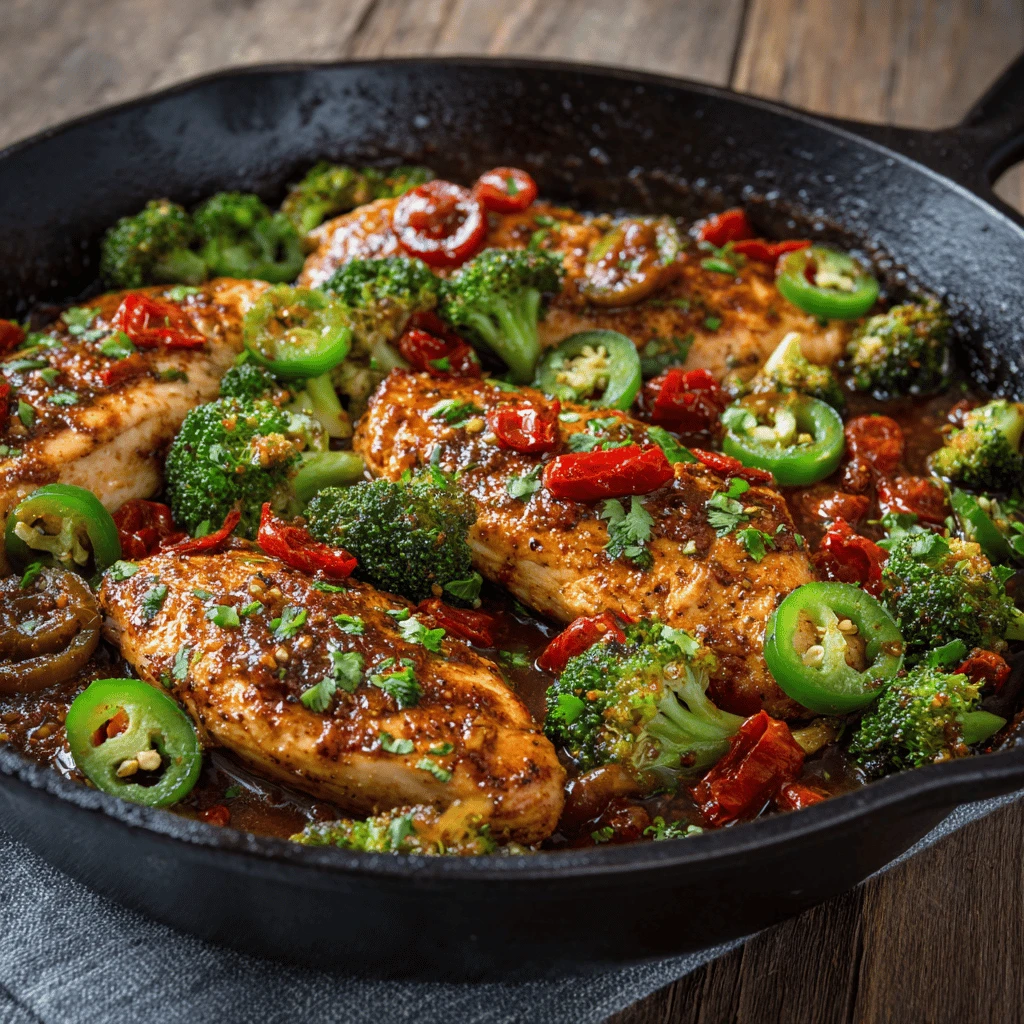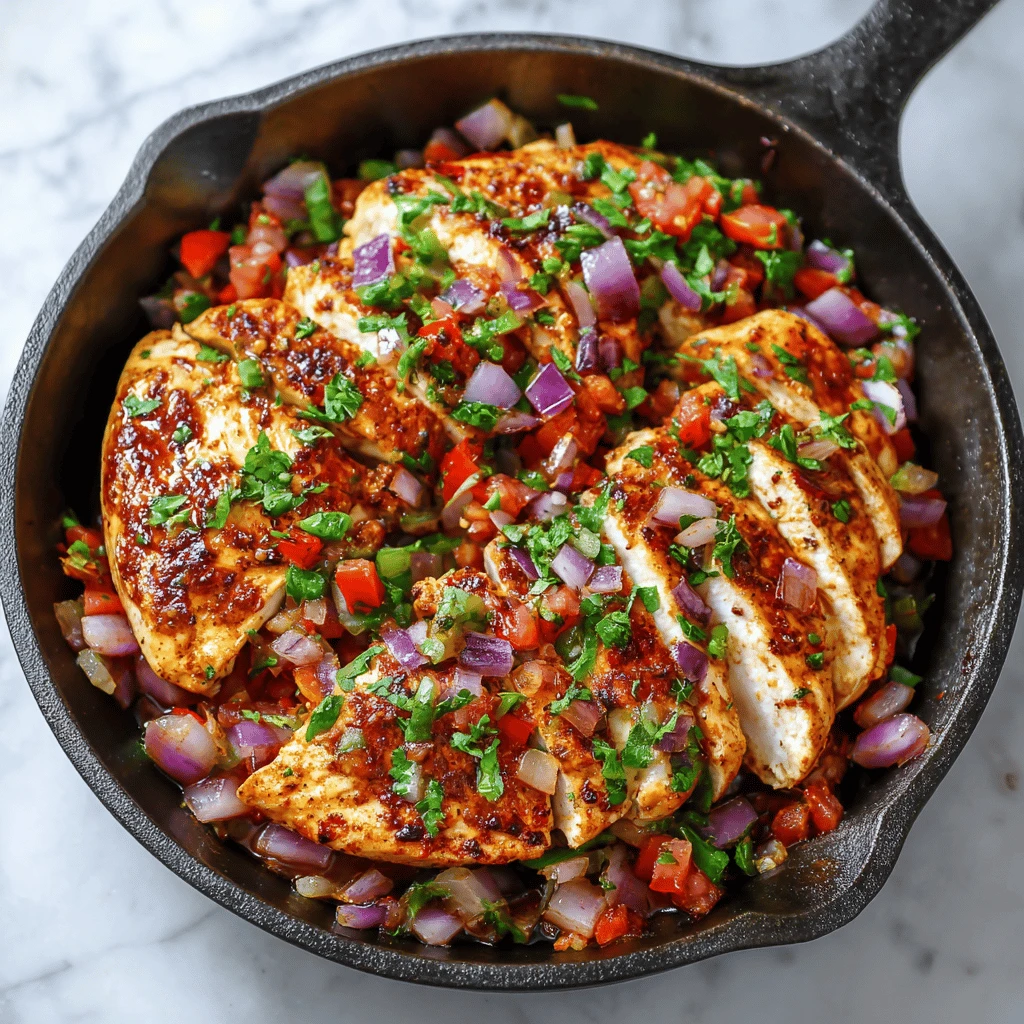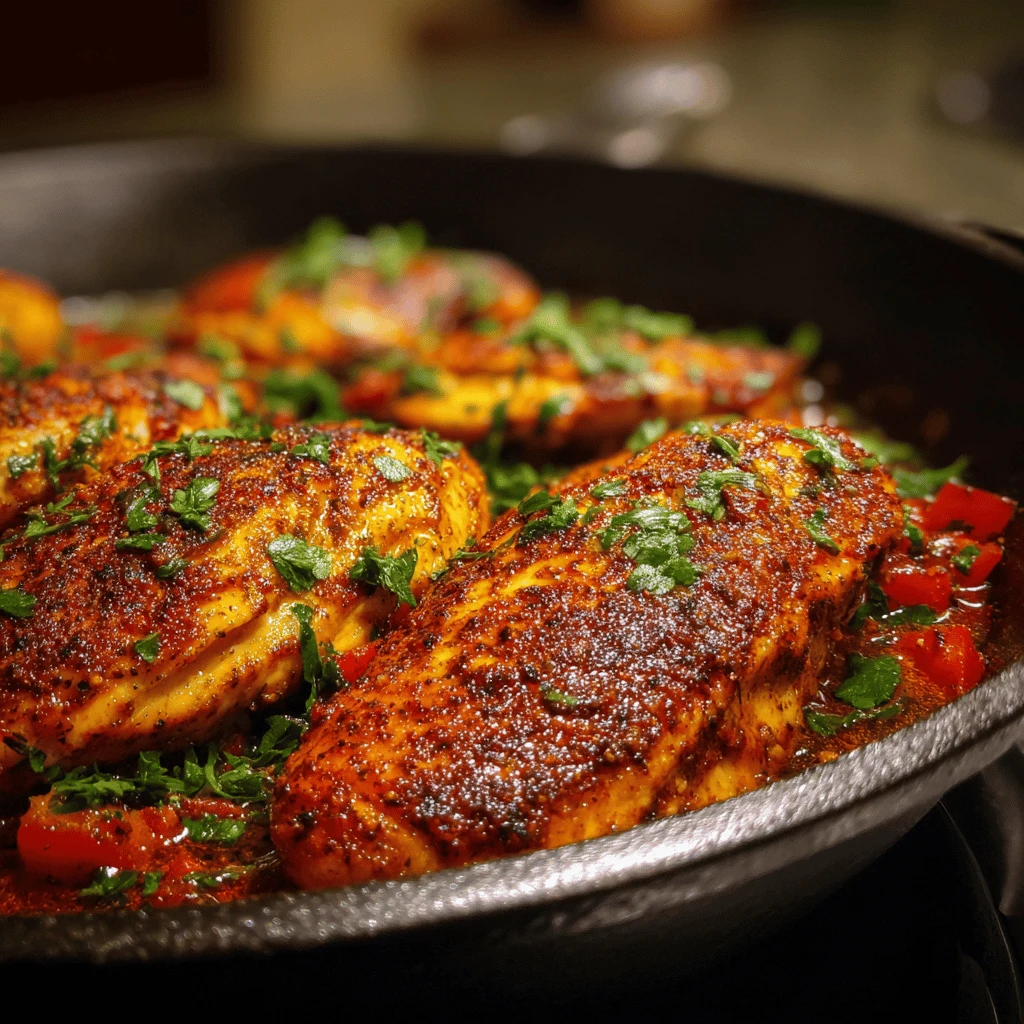Spicy Pan-Seared Chicken Breast Skillet
Craving a quick, flavorful, and satisfying meal? Look no further than a spicy pan-seared chicken breast skillet. This versatile dish is perfect for weeknight dinners, offering a delicious combination of juicy chicken and bold spices, all cooked in one pan for easy cleanup. This article will guide you through creating the perfect spicy pan-seared chicken breast skillet, offering tips, tricks, and variations to suit your taste.
Mastering the Perfect Pan-Seared Chicken Breast
The key to a truly delicious spicy pan-seared chicken breast skillet lies in properly preparing and cooking the chicken. Here’s a breakdown of the essentials:
- Choosing the Right Chicken: Opt for boneless, skinless chicken breasts that are of similar thickness. This ensures even cooking. If the breasts are uneven, gently pound them to an even thickness of about 1/2 inch. This will help them cook quickly and prevent them from drying out.
- Preparing the Chicken: Pat the chicken breasts dry with paper towels. This is crucial for achieving a beautiful, golden-brown sear. Moisture is the enemy of browning! A dry surface encourages the Maillard reaction, which is responsible for the rich flavor and appealing color.
- Seasoning is Key: Don’t be shy with your spices! A generous coating of spices not only adds flavor but also helps create a flavorful crust. Consider using a combination of chili powder, smoked paprika, garlic powder, onion powder, cayenne pepper (for extra heat), cumin, and a touch of brown sugar for balance.
- The Right Pan Matters: A cast-iron skillet is ideal for pan-searing because it distributes heat evenly and retains heat well, creating a beautiful sear. However, a heavy-bottomed stainless steel skillet will also work. Avoid using non-stick pans, as they don’t get hot enough to achieve a good sear.
- Proper Cooking Temperature: Heat your skillet over medium-high heat. The pan should be hot enough to sear the chicken quickly, but not so hot that it burns the spices. Test the heat by flicking a drop of water into the pan – it should sizzle and evaporate quickly.
- Don’t Overcrowd the Pan: Cook the chicken breasts in batches if necessary, ensuring that there is enough space around each piece. Overcrowding the pan will lower the temperature and cause the chicken to steam instead of sear.
- Searing Technique: Add oil with a high smoke point, such as avocado oil or grapeseed oil, to the hot skillet. Once the oil is shimmering, carefully place the seasoned chicken breasts in the pan. Sear for 4-5 minutes per side, or until a golden-brown crust forms.
- Checking for Doneness: Use a meat thermometer to check the internal temperature of the chicken. It should reach 165°F (74°C). Insert the thermometer into the thickest part of the breast. Avoid overcooking the chicken, as it will become dry.
- Resting is Crucial: Once the chicken is cooked, remove it from the skillet and let it rest for 5-10 minutes before slicing. This allows the juices to redistribute throughout the chicken, resulting in a more tender and flavorful result. Tent the chicken loosely with foil to keep it warm.
Building Flavor: Crafting Your Spicy Skillet Sauce
The sauce is where the “spicy” in your spicy pan-seared chicken breast skillet truly shines. It transforms simple pan-seared chicken into a complete and exciting dish. The possibilities are endless, but here are some popular and delicious options:
- Classic Tomato-Based Sauce: Start with a base of crushed tomatoes or tomato sauce. Add diced onions, garlic, and bell peppers for flavor and texture. Incorporate spices like chili powder, cumin, smoked paprika, and cayenne pepper to achieve your desired level of heat. A touch of honey or brown sugar can balance the acidity of the tomatoes. Simmer the sauce until it thickens slightly.
- Creamy Chipotle Sauce: This sauce adds a smoky and creamy dimension to the skillet. Sauté diced onions and garlic, then add chipotle peppers in adobo sauce (finely chopped) for a smoky kick. Stir in heavy cream or coconut cream for richness. Season with salt, pepper, and a pinch of sugar. Simmer until the sauce thickens.
- Spicy Peanut Sauce: For an Asian-inspired twist, create a spicy peanut sauce. Whisk together peanut butter, soy sauce, rice vinegar, honey, chili garlic sauce, and a touch of sesame oil. Thin with water until you reach your desired consistency. This sauce pairs well with vegetables like broccoli, bell peppers, and snap peas.
- Lemon Garlic Herb Sauce: For a lighter, brighter flavor, try a lemon garlic herb sauce. Sauté minced garlic in olive oil, then add chicken broth, lemon juice, and a generous amount of fresh herbs like parsley, oregano, and thyme. A pinch of red pepper flakes will add a touch of heat. Simmer until the sauce reduces slightly.
- Adding Vegetables: Introduce a variety of vegetables into your sauce to add nutrients, flavor, and texture. Bell peppers, onions, mushrooms, zucchini, spinach, and cherry tomatoes are all excellent choices. Sauté the vegetables in the skillet before adding the sauce ingredients.
- Flavor Enhancers: Don’t underestimate the power of simple flavor enhancers. A squeeze of lime juice adds brightness, a splash of Worcestershire sauce adds depth, and a dash of hot sauce adds extra heat.
- Building the Sauce: After searing the chicken and removing it from the skillet, use the same skillet to create your sauce. This allows the sauce to pick up all the flavorful bits of fond left behind from the chicken. Scrape the bottom of the pan with a wooden spoon to release any browned bits.
One-Pan Perfection: Assembling Your Skillet
Now that you have perfectly pan-seared chicken and a flavorful sauce, it’s time to assemble your spicy chicken breast skillet. This is where the magic happens!
- Bringing it Together: Return the cooked chicken breasts to the skillet with the sauce. Spoon the sauce over the chicken, ensuring that it is well coated. If you added vegetables to your sauce, make sure they are evenly distributed throughout the skillet.
- Simmering for Flavor: Allow the chicken to simmer in the sauce for a few minutes, or until it is heated through. This allows the flavors of the sauce to meld with the chicken, creating a cohesive and delicious dish.
- Adding a Finishing Touch: Before serving, consider adding a finishing touch to elevate your skillet. Fresh herbs like cilantro, parsley, or green onions add a burst of freshness and color. A squeeze of lime juice brightens the flavors. A sprinkle of toasted sesame seeds adds a nutty crunch.
- Cheese Please: A sprinkle of shredded cheese, such as cheddar, Monterey Jack, or pepper jack, can add a creamy and melty element to the skillet. Add the cheese during the last minute of cooking, allowing it to melt slightly.
- Serving Suggestions: Your spicy pan-seared chicken breast skillet can be served in a variety of ways. Serve it over rice, quinoa, or pasta for a complete meal. Use it as a filling for tacos, burritos, or wraps. Serve it alongside roasted vegetables or a fresh salad. It also tastes great served with mashed potatoes.
- Garnishing for Appeal: Presentation matters! A simple garnish can make your skillet look even more appealing. A sprinkle of fresh herbs, a drizzle of sour cream, or a scattering of chopped tomatoes can add a pop of color and visual interest.
Creative Variations: Spice It Up Your Way
One of the best things about this recipe is its versatility. You can easily customize it to suit your taste preferences and dietary needs. Here are some creative variations to inspire you:
- Spice Level Customization: Control the heat by adjusting the amount of cayenne pepper or hot sauce in your sauce. If you prefer a milder flavor, omit these ingredients altogether or use a milder chili powder. For those who like it extra spicy, add a few drops of your favorite hot sauce or a pinch of ghost pepper flakes.
- Vegetarian Options: Replace the chicken with tofu or tempeh for a vegetarian version. Press the tofu to remove excess water, then cut it into cubes and pan-sear it until golden brown.
- Low-Carb Adaptations: Serve the chicken skillet over cauliflower rice or zucchini noodles for a low-carb option. You can also skip the grains and simply serve it with a side of steamed or roasted vegetables.
- Different Protein Choices: While chicken breast is a classic choice, you can also use other types of poultry, such as chicken thighs or turkey breast. Shrimp, pork tenderloin or even steak are great alternatives. Adjust the cooking time accordingly.
- Global Flavors: Experiment with different cuisines by incorporating global flavors into your sauce. Try adding ginger, garlic, and soy sauce for an Asian-inspired flavor. Use harissa paste for a North African flavor. Incorporate coconut milk and curry powder for an Indian-inspired flavor.
- Adding Beans: Add beans, like black beans or kidney beans, for extra protein and fiber. Add canned beans, drained and rinsed, when you add the sauce.
- Meal Prep Friendly: This recipe is perfect for meal prepping. Cook the chicken and sauce ahead of time and store them separately in the refrigerator. When you’re ready to eat, simply reheat the chicken and sauce in a skillet or microwave.
FAQ: Your Spicy Chicken Skillet Questions Answered
Q: How do I prevent my chicken from drying out?
A: The most important factor is not overcooking it. Use a meat thermometer to ensure it reaches 165°F (74°C) and remove it from the heat immediately. Letting it rest before slicing also helps retain moisture.
Q: What if I don’t have a cast-iron skillet?
A: A heavy-bottomed stainless steel skillet is a good alternative. Avoid non-stick pans, as they don’t get hot enough to achieve a good sear.
Q: Can I make this ahead of time?
A: Yes! This dish is great for meal prepping. Cook the chicken and sauce separately, then combine them when you’re ready to serve.
Q: What sides go well with this skillet?
A: Rice, quinoa, pasta, roasted vegetables, or a fresh salad are all excellent choices.
Q: How long will leftovers last?
A: Leftovers can be stored in an airtight container in the refrigerator for up to 3-4 days.
Q: Can I freeze this dish?
A: Yes, you can freeze the chicken and sauce. Allow it to cool completely before freezing. Thaw overnight in the refrigerator before reheating.
Q: What other spices can I use?
A: Get creative! Consider using Italian seasoning, Cajun seasoning, or even a pre-made spice blend that you enjoy.




